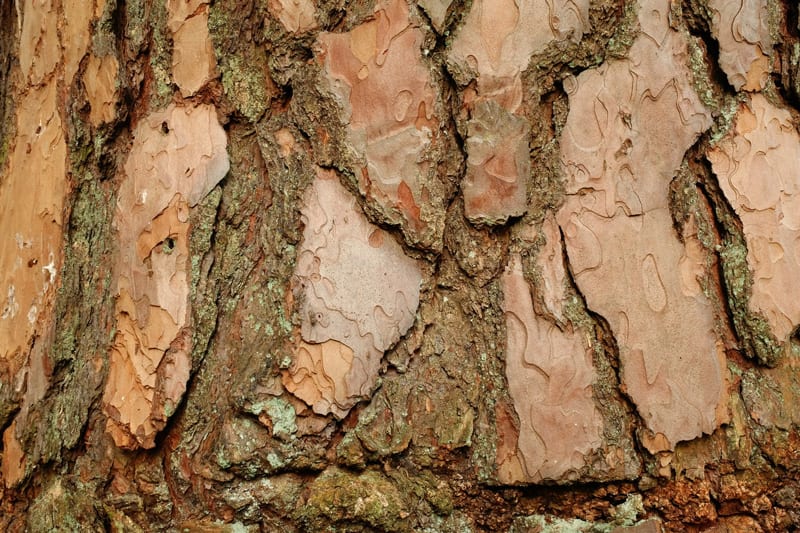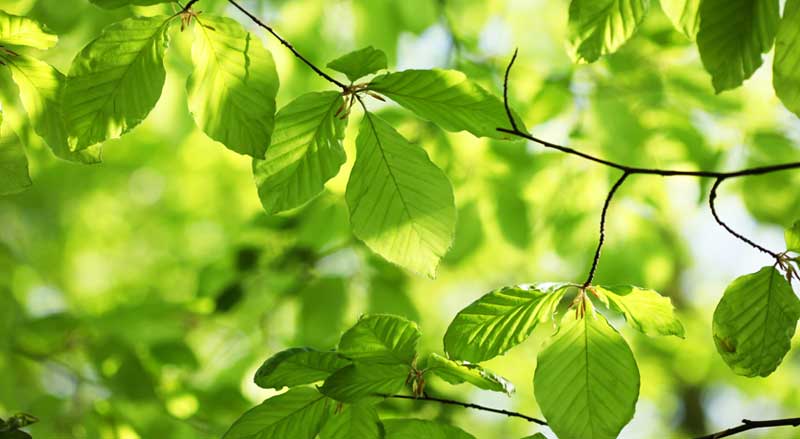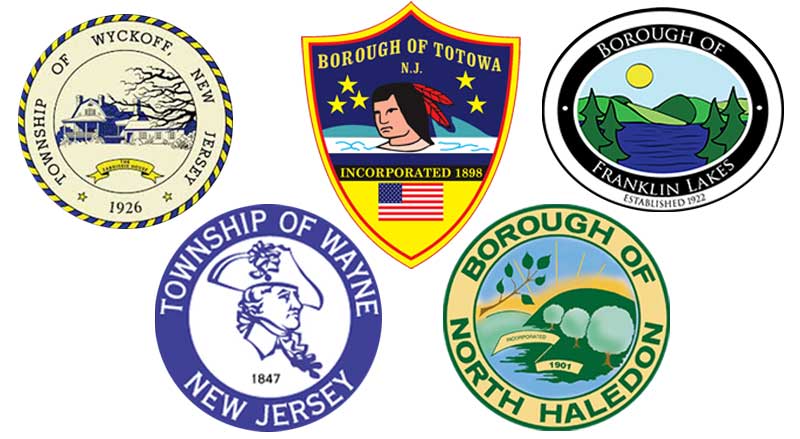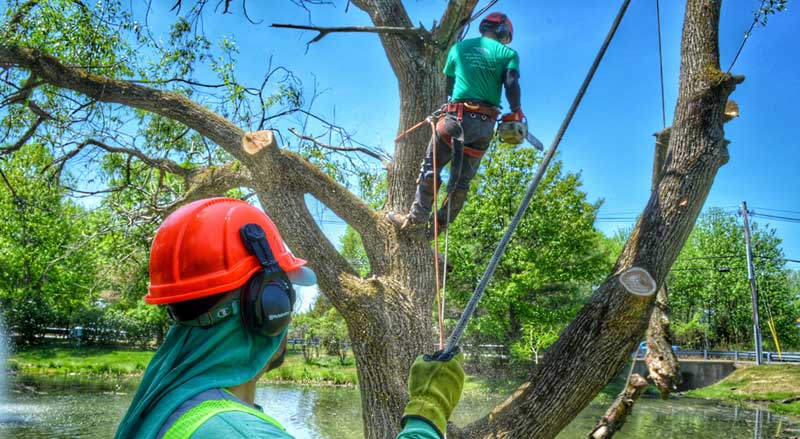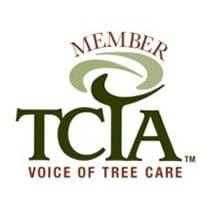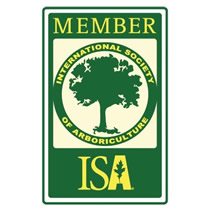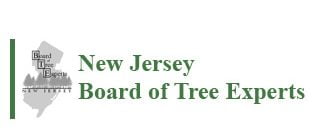Is your tree shedding its bark? It might be coming off in long strips, small flakes, or even large chunks. Sometimes shedding bark is just part of a tree’s natural growth process. Other times, it’s a reaction to stressful living conditions, disease, or infestation.
Common Causes of Bark Loss
The first step you should take is to identify the type of tree that’s shedding. Birch, silver maple, and sycamore trees shed bark as a kind of charming eccentricity. No worries there!
If it’s an ash, maple (other than silver, of course!), oak, or pine tree, it’s probably just growing. Like a crab shedding its too-tight shell, a tree must shed its old bark ‘shell’ to make room for the new, larger tree within.
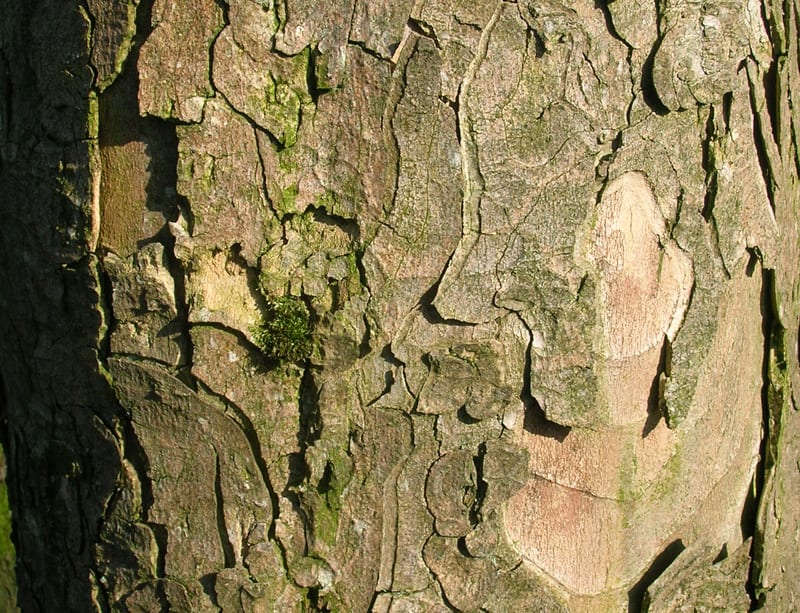
Trees grow, and when they do, the outside must expand. In younger trees, the outside bark is generally softer and more flexible and can accommodate the growth.
But older trees with harder bark will crack and split, and sometimes, the bark delaminates from the tree trunk, revealing the inner layer below. This process is known as exfoliation. It tends to occur at the same time every year. If the tree looks healthy otherwise, then it is probably nothing to worry about.
The process of exfoliation can be exacerbated by extreme temperatures, like extreme cold or extreme heat, causing cracks in the bark. However, a healthy tree can heal the damage, in which case there is no cause for alarm. It is when the tree otherwise looks unhealthy that you need to worry.
Trees that Naturally Shed Bark
Although it seems like a bad sign, shedding bark doesn’t always indicate a problem. In fact, a tree shedding its bark is a natural part of the growing process. As a tree matures, its bark thickens and falls off.
For most trees, shedding isn’t noticeable because it happens quickly. However, some trees have a longer process which allows us to watch and enjoy. Some trees that shed seasonally include:
- Birch
- Sycamore
- Silver maple
- Redbud
- Pine trees
- Hickory trees
Cause for Concern?
If you notice bark shedding under any of the circumstances below, you may need to take steps to protect your valuable tree.
During Temperature Extremes
If there have been abrupt temperature changes recently, they may have triggered the loss of bark. Trees are extremely susceptible to winter tree damage during the frigid, cold temperatures of the season.
Fruit trees and some nut trees are particularly susceptible to ‘frost crack‘ because of their thin bark. It’s very common in sycamores and can also happen to horse chestnuts, lindens, maples, and willows.
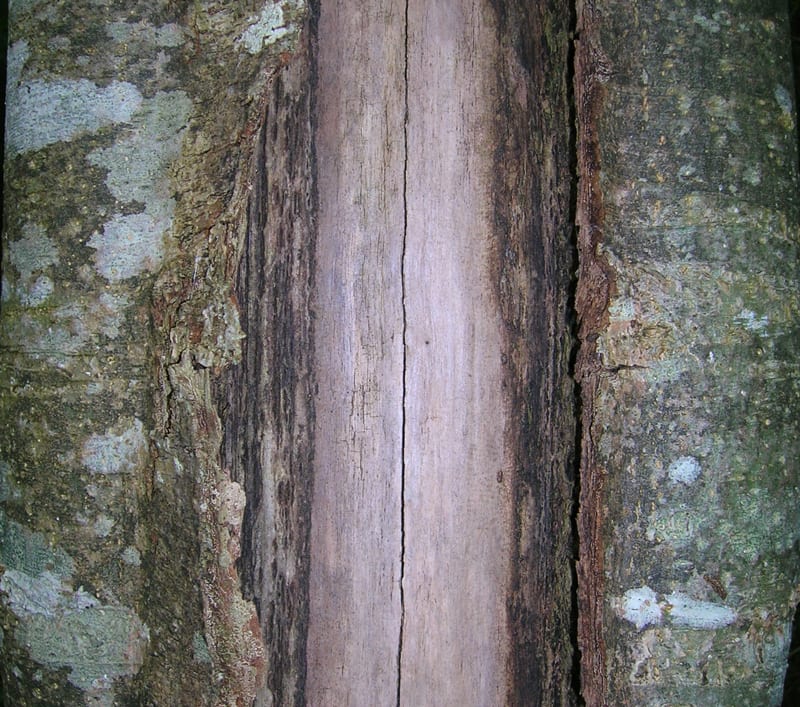
Despite the name, frost crack doesn’t only happen in winter. Excessive heat can cause it, too! Basically, it’s caused by any temperature-related stress and usually occurs on the south or southwest side of the tree.
Frost crack can progress from falling bits of bark to deep vertical cracks, so you’ll need to act promptly to preserve the beauty of your tree.
If warm days are followed by cold nights, tuck a light-colored tree blanket around your tree. The blanket will reflect sunlight away from the tree, keeping the bark temperature uniformly cold.
Keep your tree well-watered except when the ground is frozen. Using mulch helps keep the soil moist. When pruning, leave enough canopy so the tree can shade its bark from intense sunlight.
After Warm, Sunny Spells in Late Winter or Early Spring
These conditions are perfect for producing sunscald. That warm afternoon sun can trick the tree into breaking dormancy. The freezing night that follows then kills that newly awakened tissue and causes unsightly blemishes on the trunk.
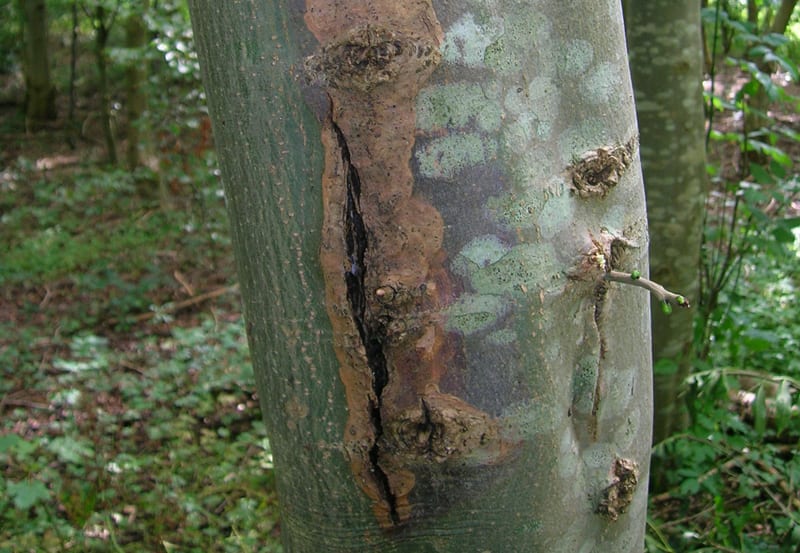
Like a human sunburn, the damaged tissue may start peeling. Sunscald is most likely to occur on trees with smooth and/or dark-colored bark.
Signs of Disease or Pests
Diseases and pests weaken a tree and cause distress that can result in a tree shedding its bark. There are many signs of tree damage and indicators that your tree is dying from disease.
The most obvious signs of tree disease are dead branches, discolored leaves, and cracks on the trunk. But more serious signs can include:
- Dead or dying twigs and leaves
- Unusual occurrences of dripping or oozing sap
- Sawdust
- Cankers
- Fuzzy fungus
Tree Disease – Cankers and Fungal Infections
Trees may stand strong and firm, but they are extremely susceptible to disease and damage. There are many different tree diseases that are unfortunately very common.
The most common are cankers and fungal infections. Cankers and other fungal infections attack trees through the bark and infect the inner layer. This often causes the bark to shrivel, die, and fall off the trunk.
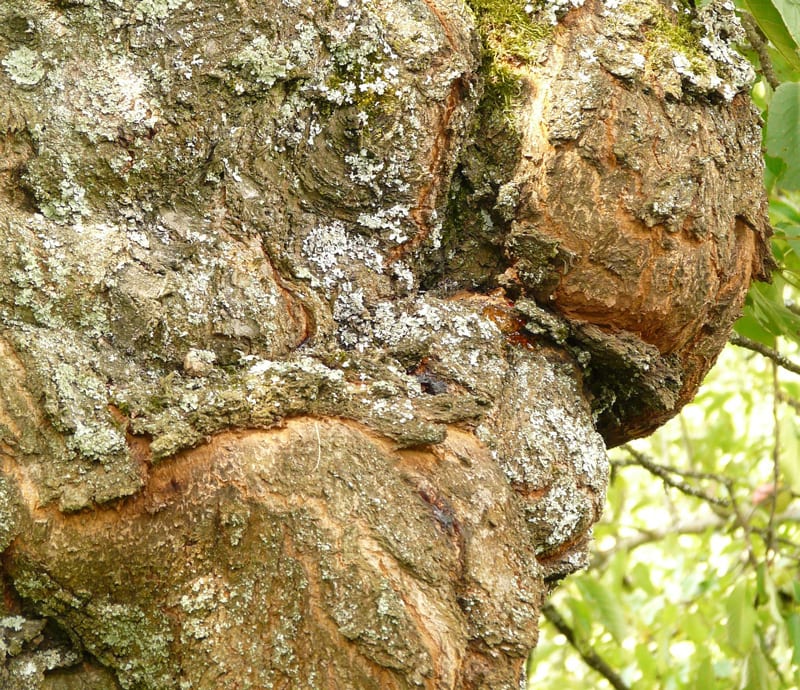
Cankers appear as lesions on bark in black, brown, or red. Dying leaves and branches will follow soon after bark issues begin. Urgent treatment is needed to save a tree with these issues.
One of the most common fungal infections in North America is called anthracnose. This is one of the leading diseases seen in both trees and shrubs. Anthracnose is often caused by an overgrowth of fungus that affects the leaves, branches, twigs, and flowers of a tree or shrub.
Sycamore and flowering dogwood are the two most common species that are highly susceptible to anthracnose.
The leading sign of anthracnose is a condition called witch’s broom. Witch’s broom is a deformity among trees that causes branches or twigs to densely grow in one spot and jumble together, causing them to appear similar to a broom.
These conditions are serious and damaging, however, trees may still be treated and remedied if caught early. This is why knowing the signs of serious tree damage is so vital for the life of your tree.
Pest Damage
Insects may be good for the circle of life, but they are disastrous for the health of your trees. There are many different types of insects that cause harm to trees and shrubs.
These insects are put into three main categories:
Defoliating insects
- Japanese beetles
- Tent caterpillar
- Gypsy moth
- Cankerworms
- Bagworms
Burrowing insects
- Dogwood borer
- Asian longhorned beetle
- Elm bark beetle
- Emerald ash borer
Sucking insects
- Aphids
- Spider mites
- Leafhoppers
- Scale Insects
These categories speak for themselves in the damage they cause to a tree. But the leading sign of all three harmful-insect categories includes shedding bark.
Beetles specifically can cause a lot of harm to trees and shrubs. Some beetles are known to use diseased or weakened trees to plant their egg colonies, by looking for cracks in the bark.
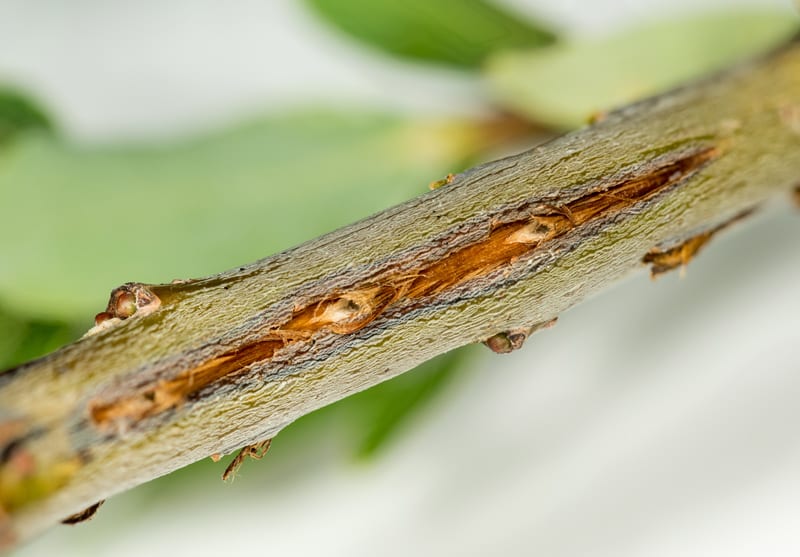
The damage created by these pests causes the bark to break and slide off. This also attracts woodpeckers who are after the beetle larvae. Woodpecker activity will often leave bark debris behind, indicating possible infestation. Pest damage to bark tends to appear lower on trees.
Another insect that is extremely harmful to trees and shrubs and may cause shedding bark is the dreaded spotted lanternfly. The U.S is seeing a surge in these spotted insects over the last two years, and they will most likely be back in full swing come spring.
Spotted lanternflies can leave a honeydew residue on trees and plants which in turn eat away at your trees’ bark, causing it to shed and die. Knowing how to identify and get rid of spotted lanternflies is crucial for saving both the bark and life of your tree.
If you see any symptoms of a sick tree on your property, consult with a professional arborist who can diagnose and treat the underlying problem. Consulting with a tree expert can be the difference between saving a beautiful asset in your landscape and the danger of property damage.
This blog post was updated on March 30, 2022.

